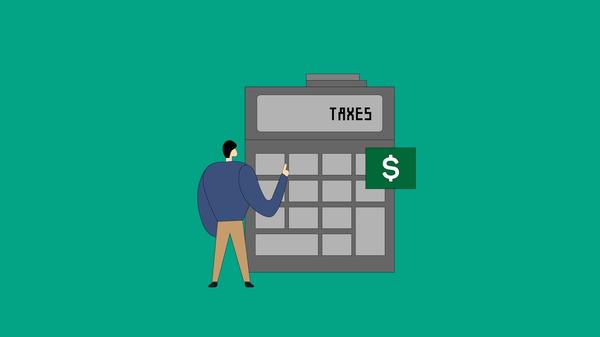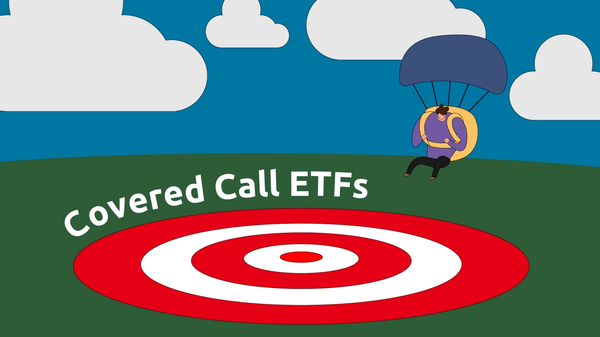If success has a thousand fathers but failure has none, it would be safe to say that the popularity of ETFs in today’s portfolios indicates a very extended family of investors. It’s estimated that more than 3,000 ETFs are currently available in the American market alone. Which begs the question, does this popularity breed overlap?
Is paying management fees twice on the same ETF cost effective? And does overlap also create tax problems. For example, the overlap between the Vanguard Growth Index Fund (VUG) and the Vanguard Value Index Fund (VTV) is 0.8. Which begs the question of whether a client needs to hold both.
How do I compare ETFs?
While there are sophisticated programs for examine overlap, let’s start with a simple example, comparing the Vanguard Total Stock Market ETF (AMEX:VTI) and Vanguard S&P 500 ETF (AMEX:VOO). Based on market price, VTI boasts a 10-year average annual return rate of 12.07 percent , which is only slightly lower than VOO's 12.61 percent .
These numbers highlight the consistent performance of both VTI and VOO in generating positive returns. So, which one should you choose? VOO and VTI are both solid options for a 100 percent U.S.-based index fund, with low expense ratios and returns that track market returns.
Both funds offer investors exposure to the US stock market, but with slightly different approaches. VTI tracks the performance of the entire US stock market, while VOO focuses solely on the S&P 500 index.
If you like the name-brand recognition of the S&P 500 and want to stick to large-caps, VOO might be the better choice. On the other hand, if you prefer a broader market exposure and want to include mid-cap and small-cap stocks, VTI could be the winner for you. Ultimately, it depends on your investment goals and risk tolerance.
The Best ETF Comparison Tools
Sharesight
Investors who hold multiple ETFs - or a mixture of stocks & ETFs - in their portfolio can avoid overlap in holdings by running Sharesight's handy Exposure report tool. This feature provides a breakdown of the top holdings currently inside any held ETFs, alongside individual holdings of those same companies you may have, resulting in a total percentage figure of portfolio composition.
The report was designed to provide investors with an "x-ray" view of their portfolio and help ensure proper diversification, while preventing accidental over-exposure to any one particular company. Being able to see this data directly within your portfolio tracking tool prevents the need to continually keep tabs on your ETFs' underlying holdings via external means, making it easier to make smart investment decisions at a glance.
Investors can then also use Sharesight's various other reports and tools to benchmark their portfolio against other ETFs or indices, check their diversification by sector, country, and more for building a better-balanced investment portfolio.
Get Sharesights ETF tracker today to see inside your ETFs and avoid overlap in your portfolio.
Disclosure: Sharesight is a corporate partner of Passiv and uses their product SnapTrade to securely connect brokerage accounts.
Portfolio Pilot
PortfolioPilot is a tool that can help everyday investors select ETFs and understand how complementary they are to one another and a portfolio at large.
Buying a new ETF with overlapping drivers can make it seem like an investor is adding diversification when really, they may be just doubling down on the same set of exposures. PortfolioPilot makes it intuitive to understand how adding a new ETF might impact a user’s Portfolio Score, which includes characteristics like Downside Protection – a measure that increases as a portfolio has less “overlapping” exposure. Users can create Draft portfolios with different holdings and understand the impact of these decisions, and even get personalized recommendations on what to consider buying next to potentially increase overall diversification and reduce overlap. They can also pull up a correlation matrix of all their securities, which will show how quantitatively related each holding is to each other holding (where a lower number generally means there is lower overlap as well).
That said, there are several standalone considerations that are worth evaluating before seeking to dive into the concept of ETF overlap. For one, investors should understand the investment philosophy of an ETF, and whether it aligns with their goals (for example, is it passively managed, and/or does it track a benchmark that they want exposure to). Passive investors may want to look for funds with low expense ratios (essentially, fees that are deducted from underlying asset returns) and may want to consider trading volumes (to better understand which funds could be cheaper to trade). PortfolioPilot has several features like the ETF Screener and the Security Explorer that may be helpful in this regard.
However, just as important are portfolio considerations, meaning, does a fund add something unique and valuable to an investor’s portfolio given what they already invest in (or plan to invest in). One way to think about a passive ETF is that an investor isn’t just buying into a pool of securities – they are also buying in to various underlying macroeconomic exposures and drivers.
Take a deeper look at ETFs with Portfolio Pilot to understand how complementary they are to one another to asses their overlap.
Disclosure: Global Predictions, the company behind PortfolioPilot, is a corporate partner of Passiv and uses their product SnapTrade to securely connect brokerage accounts; the author [is/is not] a PortfolioPilot user and no compensation was provided for this piece. This is not investment advice or an endorsement/testimonial. Investing involves risk.
Determining the Right Amount of Overlap
How many ETFs should you own?
Investors often wonder how much overlap is acceptable. While there is no universal threshold, a common guideline suggests keeping overlap between ETFs below 50 percent. In essence, if two ETFs share more than 50 percent of their holdings, it is deemed high overlap, which diminishes diversification benefits.
For instance, if you own two ETFs — one tracking the S&P 500 and another tracking the Nasdaq 100 — you may find substantial overlap due to shared companies. This means that if one index performs poorly, the other is likely to follow suit, limiting diversification.

Create a balanced portfolio with Passiv
Set your allocations to ensure a diversified portfolio that doesn't overlap, then rebalance when you need to with one click.
Get StartedCrafting a Diversification Strategy for ETF and Mutual Fund Portfolios
Diversification remains a cornerstone for risk management and financial success. To address overlap, investors must scrutinize their portfolios, monitor overlap, and leverage tools like ETF Insider to visualize data and make informed choices. A diversified portfolio that thoughtfully balances asset classes, minimizes overlap, and strategically allocates resources across sectors and industries enhances the potential for long-term success. Tools like ETF Insider equip investors with the insights and information needed to optimize their investment strategies and navigate the complex world of ETFs effectively.


